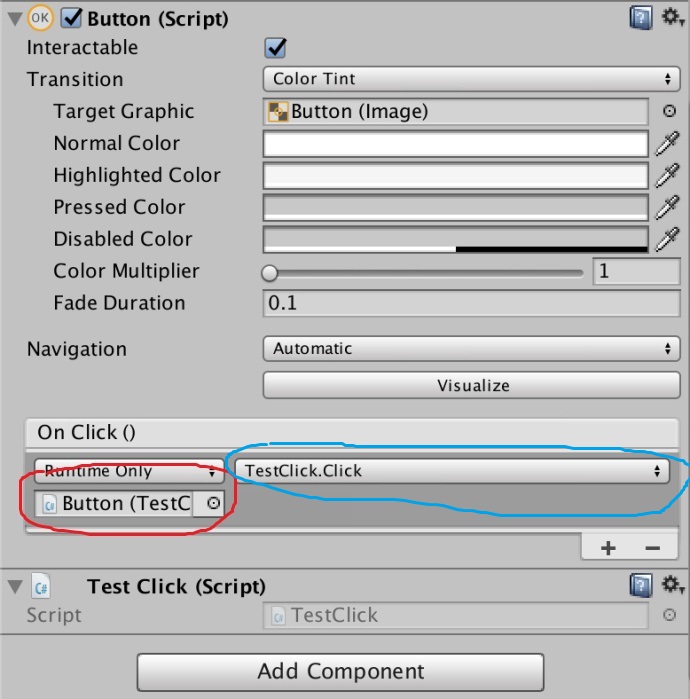Addlistener Unity
For example, for detecting clicks, I'm using onClick event trigger, but I can't find anything related to something like a onHover event. Due to that piece of your question, I assume that what you want to find out is how to detect mouse hovering over UI Buttons in Unity (version above 4.6). Get the RPG Academy Bundle: off code: AG39QZ Become a Patron and get my premium Unity assets!https://www.patreon.com/GameGrindQue. Unityでコンポーネントにイベントを設定するとき、AddListnerをよく使用します。 このAddListnerですが、 イベントの種類によっては引数が必要になる場面があるのをご存知でしょうか? 今回は、ラムダ式でイベント設定する時の注意をまとめたいと思います。.
Friday, May 17, 2019
In this article we will do a little setup and then spend the majority of time focusing on dealing with user input, in our case both pointer up and pointer down, as it relates to our draggable behavior. We will first see how we wire up our event handlers using the Unity editor and once we have a better understanding of that process we will proceed to wire them up programatically so that we do not have to do the manual steps everytime we add our draggable behavior to an object.
Parts
- Part 1: Draggable Pointer Events
Project Start

- Assets
- UserInterface
- Scenes
- DraggableScene.unity
- DraggableBehavior.cs
- Scenes
- UserInterface
We will start by creating the UserInterface folder within our Unity project. Once that is done we will create an additional Scenes folder that will contain our scenes and we will create a new scene within it. Last up is to create our first script which we will name DraggableBehavior.cs and is shown in (a).
Now that our script is created we will return to Unity and create a DraggableScene and within that scene we will add UI Panel. Once tha panel is added will need to set the anchors and the pivot to (0.5, 0.5), the position to (0, 0) and height and width to 150 each. Next up we can add our DraggableBehavior script to our panel either by dragging the the script into the inspector on the right or by using the add component button. Once that is done we should have everything set up as shown in (b).
DraggableBehavior script to the panel. How about a pretty green color?
- Assets
- UserInterface
- DraggableBehavior.cs
- UserInterface
My intention is to have the ability to drag a ui component around whenever our draggable behavior is active. To indicate to the user that they can in fact drag something our first job is to define a color that will be shown when our component is active and to have that color applied automatically for us (c). The property that we are calling Handle represents the game object that will be able to click and drag on to move the object. In the end we will end up with the ability to drag around an ancestor container by clicking and dragging on a child. But for now we will focus on just dragging our single panel around.
Once that is done and we return to Unity if we play our scene we should see that our panel is colored with the appropriate color as shown in (d).

Manual Event Handling
- Assets
- UserInterface
- DraggableBehavior.cs
- UserInterface
Next up we will add some event handling to our script. First up is just to add a couple of methods that we can use to wire up the event handling within the Unity editor (e).
Now that we have the methods defined we can turn back to the Unity editor and add an Event Trigger component and within it add our two entries, one each for pointer up and pointer down, and point them to the methods we just created (f). With that done if he play our scene we should see information printed to the console if we click on the panel.
Event Trigger component and adding entries to it, in this case for pointer up and pointer down. Doing things manually is for the birds
- Assets
- UserInterface
- DraggableBehavior.cs
- UserInterface
I am a big believer in having things work with as close to zero configuration as possible and to that end we will add our event handling within our script instead of having to wire things up manually inside of the Unity editor any time we want to add our dragging behavior. First thing to do is to remove the Event Trigger component from our panel. Next up is to modify our script to add the Event Trigger component and to wire up our entries (g).
If we check again by playing our scene and click on our panel we should see once again that we have the information being displayed in the debug console.
Enter the extension method
- Assets
- Utilities
- UiUtilities.cs
- Utilities
Adding the event handlers to our panel is a bit on the verbose side for me. And since this is an operation that we will do multiple times we might as well make it a bit easier on us to do. To do this we will create our first extension method (h).
Updating our behavior
Unity Button Onclick Parameter
- Assets
- UserInterface
- DraggableBehavior.cs
- UserInterface
Unity Addlistener Delegate
With our extension method in place we can update our draggable behavior to use it as shown in (i).
Addlistener Unity
